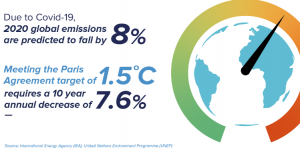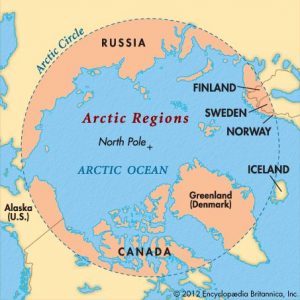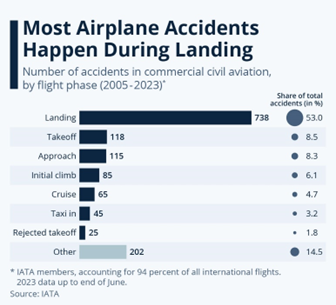THE INTERNATIONAL RELATIONS
1. THIRD ANNUAL DEFENCE DIALOGUE
THE CONTEXT: The third Annual Defence Dialogue between India and France took place between Defence Minister and his French counterpart in New Delhi. A wide range of bilateral, regional, defence and defence industrial cooperation issues were discussed in the annual meeting.
THE EXPLANATION:
- The Ministers reviewed the existing military-to-military cooperation, which has increased in spite of pandemic challenges. They discussed ways to increase defence cooperation in all domains.
- Defence industrial cooperation was discussed with a focus on future collaborations and co-production between the two countries.
France’s resolve to expand strategic cooperation with India came nearly two months after the unveiling of a new security alliance (AUKUS) by Australia, the UK and the US that had infuriated the French government.
Defence & Space Cooperation between the two countries
- Regular talks take place between the service chiefs of both nations. An annual defence dialogue at the ministerial level has also been initiated in 2018.
- Regular defence exercises take place between France and India. Such as
- Exercise Shakti (Army)
- Exercise Varuna (Navy)
- Exercise Garuda (Air Force)
- India also buys defence equipment from France, the most famous of them being Rafale aircraft and P-75 Scorpene project.
- There is a Dassault Reliance Aerospace Limited (DRAL) manufacturing facility at Mihan in Maharashtra, which is a joint venture between India’s Reliance Group and the French aerospace company Dassault Aviation.
- France and India signed an agreement for the cooperation of the Gaganyaan mission. France space agency, CNES, will support scientific experiment plans and will provide french equipment, consumables, and medical instruments for Indian astronauts’ use.
- ISRO and CNES (the French space agency) have conducted joint research programmes and satellite launches. Examples of joint Indo-French satellites: TRISHNA, Megha-Tropiques, etc.
- France is a major supplier of equipment and components for the Indian space programme.
THE ENVIRONMENT AND ECOLOGY
2. IMD HAS PREDICTED A COLD WAVE IN NORTHWEST INDIA
THE CONTEXT: The India Meteorological Department (IMD) has predicted a cold wave in parts of Punjab, Haryana, Chandigarh, Gujarat, Rajasthan, and Uttar Pradesh from mid-December 2021.
THE EXPLANATION:
What is a cold wave?
The IMD defines a cold wave qualitatively as “a condition of air temperature which becomes fatal to the human body when exposed.”
- The minimum temperature is likely to fall by 2 to 4 degrees Celsius in these places over mid December 2021.
- The IMD records a cold wave when the minimum temperature is equal to or less than 10 degrees Celsius at a weather station in the plains and is 4.5 degrees to 6.4 degrees below the normal temperature for that period. A cold wave may also be recorded at a station in the plains when the minimum temperature is less than or equal to 4 degrees Celsius.
Why do cold waves occur?
- Cold waves usually occur from mid-December to the end of February in northern India. Sometimes, a cold wave may set in before mid-December. According to IMD, that the cold waves depend on weather systems and wind patterns from the middle latitudes, that is from Europe or West Asia, since the winds from these regions bring cold weather.
- Also, it noted, the factors that bring cold waves to India include the movement of cold air masses brought about by upper-level winds. They can be triggered by strong westerly winds approaching northwest India and transporting cold air towards the southeast direction. The build-up of an extended area of relatively high pressure over northwest Asia can also bring cold waves.“Like heat waves, cold waves are hazardous to those who are exposed to the cold”.
How is it measured?
- For hilly regions, a cold wave is declared when the minimum temperature is less than or equal to 0 degree Celsius and the minimum temperature is 4.5 degrees to 6.4 degrees below the normal.
- In ‘severe’ cold wave conditions, where the minimum temperature is less than or equal to 10 degree Celsius and departs from the normal by 6.5 degrees or more.
3. COVID-19 AND CLIMATE CRISIS
THE CONTEXT: Recently, Arctic Report Card was published by the Arctic Program of the National Oceanic and Atmospheric Administration where it stated that “the COVID-19 pandemic has exacerbated existing challenges for Alaska natives in accessing traditional foods”.
THE EXPLANATION:

- The Arctic Circle, one of the most climatologically important regions on the planet, has continued to warm at more than twice the rate as the
- rest of the world through 2021.
- The time between October 2020 and September 2021 was the seventh-warmest since the beginning of records. It was the eighth consecutive year since 2014 when the average temperature of the region was at least 1 degree Celsius above the pre-industrial average.
- The warming has also caused the rapid melting of sea ice. “Summer 2021 saw the second-lowest amount of older, multi-year ice since 1985, and the post-winter sea ice volume in April 2021 was the lowest since records began in 2010,” the report st
ated. - The decline in sea ice extent is one of the most iconic indicators of global climate change.
- The melting snow has in turn increased the discharge of the Arctic rivers by 12 percent over the average between 1981 and 2010, which could change the intensity of the water cycle of the region.
- The warming has also caused major disruptions in the ecology of the Arctic region. Scientists observed a higher ocean primary productivity than the long-term average between 2003 and 2020, in seven of the nine sub-regions of the Arctic.

- The green cover of the tundra biome of the Arctic region also increased in 2021. Beavers have been colonizing the Arctic tundra in western Alaska, transforming lowland ecosystems and degrading permafrost by increasing the amount of unfrozen surface water on the landscape in winter.
- The degradation of the permafrost can emanate huge amounts of methane, a greenhouse gas that is much more (more than 25 times) potent than carbon dioxide.
- Other human interventions in the Arctic are also disrupting the region’s environment and its inhabitants. For instance, ships (mostly for trade) ferrying between the Pacific and Atlantic Oceans have increased. Ambient marine noise levels have been increasing in the frequency bands used by marine mammals.
- This causes discrepancies in their navigation systems, sometimes leading to the mass stranding of whales, dolphins and other species along the beaches of many countries in and around the Arctic region.
Value Addition:
What is the Arctic Council?
- It is an intergovernmental forum for discussing and resolving issues related to the Arctic region. The issues may include scientific research and the peaceful and sustainable use of resources in the region.

- It works on the overall objective of conserving the pristine environment, biodiversity and the interests and well-being of the local populations.
- It is not a treaty-based international legal entity like the UN organizations or trade or regional groupings such as NATO or ASEAN.
- It was set up by the 8 Arctic countries by means of the Ottawa Declaration of 1996. These countries are the US, Canada, Russia, Iceland, Denmark, Sweden, Norway, and Finland.
India and Arctic
- India became an Observer in the Arctic Council for the first time in 2013. And, India isn’t a full-time observer.
- India launched its first scientific expedition to the Arctic in 2007 and set up a research station ‘Himadri’ in the international Arctic research base at Ny-Ålesund in Spitsbergen, Svalbard, Norway.
- It has two other observatories in Kongsforden and Gruvebadet. Himadri is manned for about 180 days a year.
4. INDIA-US ANNOUNCE SUPPORT TO INNOVATIONS TO TACKLE CLIMATE, CLEAN ENERGY CHALLENGES
THE CONTEXT: The launch of the US-India Climate and Clean Energy Agenda 2030 partnership in April 2021 reiterated the commitment of both nations to work together to achieve their ambitious climate and clean energy targets and to strengthen bilateral collaborations.
THE EXPLANATION:
- According to the Science and Technology Ministry, the programme aims to support India-US Science &Technology-based entrepreneurial initiatives that address the development and implementation of next-generation clean and renewable energy, energy storage, and carbon sequestration has been announced to tackle climate and clean energy challenges.
- The programme titled ‘Technology-based Energy Solutions: Innovations for Net Zero’ constitutes a call for Ignition Grants by the United States-India Science & Technology Endowment Fund (USISTEF), in partnership with Social Alpha, a non-profit organization promoting S&T entrepreneurship. It will identify and support ‘technology showstoppers.
What is the need?
- Climate Change is one of the biggest challenges facing our world today, spurring the call for global collaborations to tackle this crisis. The launch of the U.S.-India Climate and Clean Energy Agenda 2030 partnership in April 2021 reiterated the commitment of both nations to work together to achieve their ambitious climate and clean energy targets and to strengthen bilateral collaborations.
- India, the fifth most vulnerable country to climate change, has been witnessing increasing extreme weather events, including flash floods in Uttarakhand, increasing cyclones on the western coast and heatwaves in Rajasthan and Delhi in 2021 so far.
- More than 75% of India’s districts, home to 638 million people–nearly half the population–have been identified as hot spots for extreme climate events. India also faces a risk of a 5-4.5% hit to the annual gross domestic product from impacts of extreme weather.
ADD TO YOUR KNOWLEDGE
The US’s special envoy for climate action, visited India in April 2021 to discuss climate finance and action under the bilateral Climate and Clean Energy Agenda 2030Partnership. The partnership, launched in April 2021, aims to provide financial and technological support to India to meet its Paris Agreement goals on transitioning to renewable energy by 2030
Partnership to Advance Clean Energy (PACE)
- In 2009, India and the US launched the Partnership to Advance Clean Energy (PACE), to accelerate low-carbon economic growth and deployment of clean industrial technologies, through sharing of knowledge and technology.
- PACE mobilized $2.5 billion (Rs 18,382 crore) in private and public investment in clean energy deployment in India. In 2016, both countries launched a $7.9 million (Rs 58 crore) PACEsetter Fund to provide grants for innovations in clean energy solutions.
THE PRELIM PRACTICE QUESTION
Q1. Consider the following statements:
- Competition Commission of India is a statutory body established under SEBI Act 1992.
- It consists of a chairperson and 6 Members.
Which of the statements given above is/are correct?
a) 1 only
b) 2 only
c) Both 1 and 2
d) Neither 1 nor 2
FOR 17TH DECEMBER 2021 PRELIMS PRACTICE QUESTIONS
Answer: c)
Explanation:
- All subsidies which are supposed to distort production and trade fall into the amber box,i.e., all agricultural subsidies except those which fall into the blue and green boxes.
- These include government policies of minimum support prices (as MSP in India) for agricultural products or any help directly related to production quantities (as power, fertilizers, pesticides, irrigation, etc).
Answer: b)
Explanation:
Blue box subsidies:
- The conditions are designed to reduce distortions. Any subsidy that would normally be in the amber box, is placed in the blue box if it requires farmers to go for a certain production level.
- These subsidies are nothing but certain direct payments (i.e., direct set-aside payments) made to farmers by the government in the form of assistance programmes to encourage agriculture, rural development, etc.


